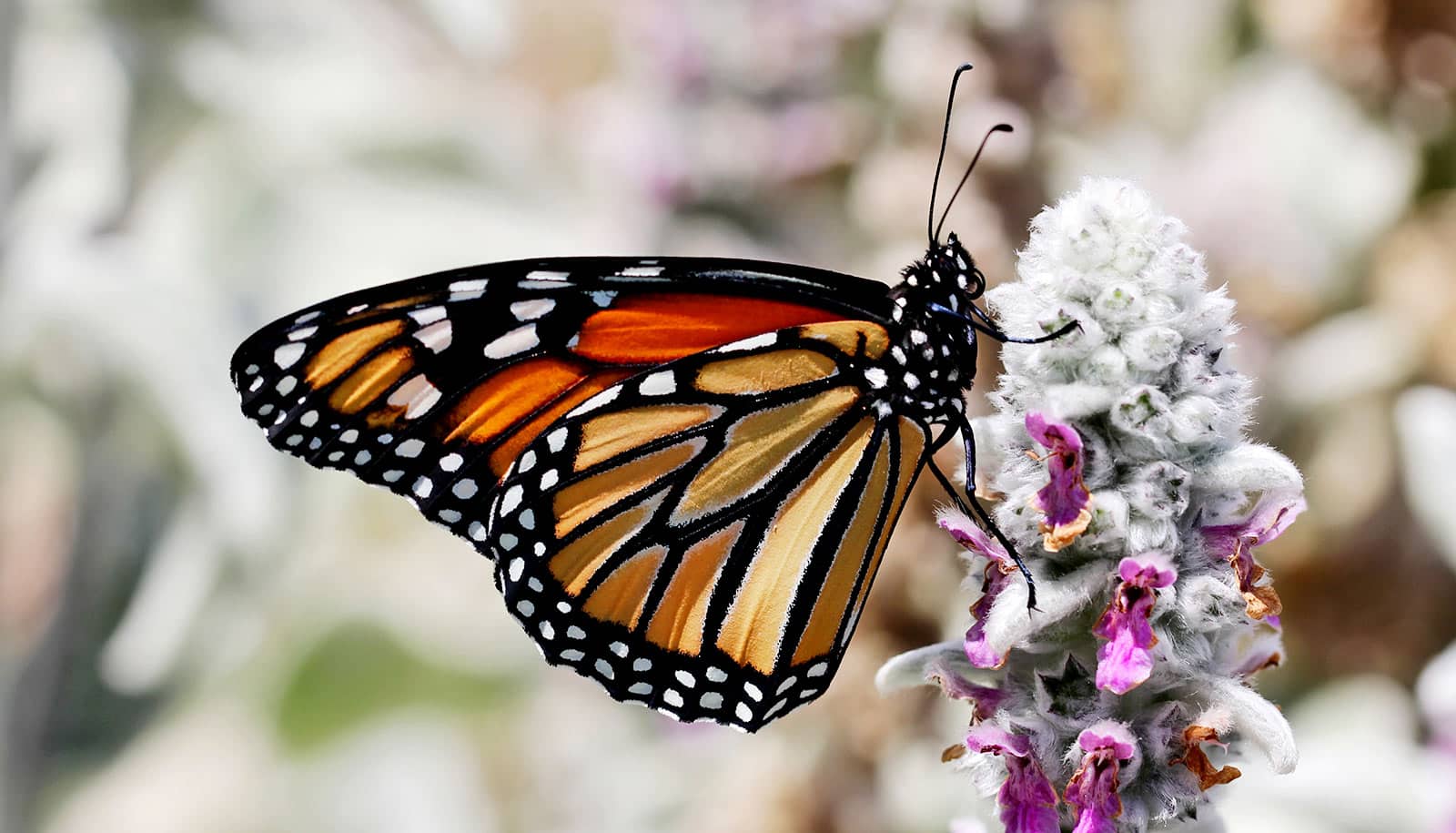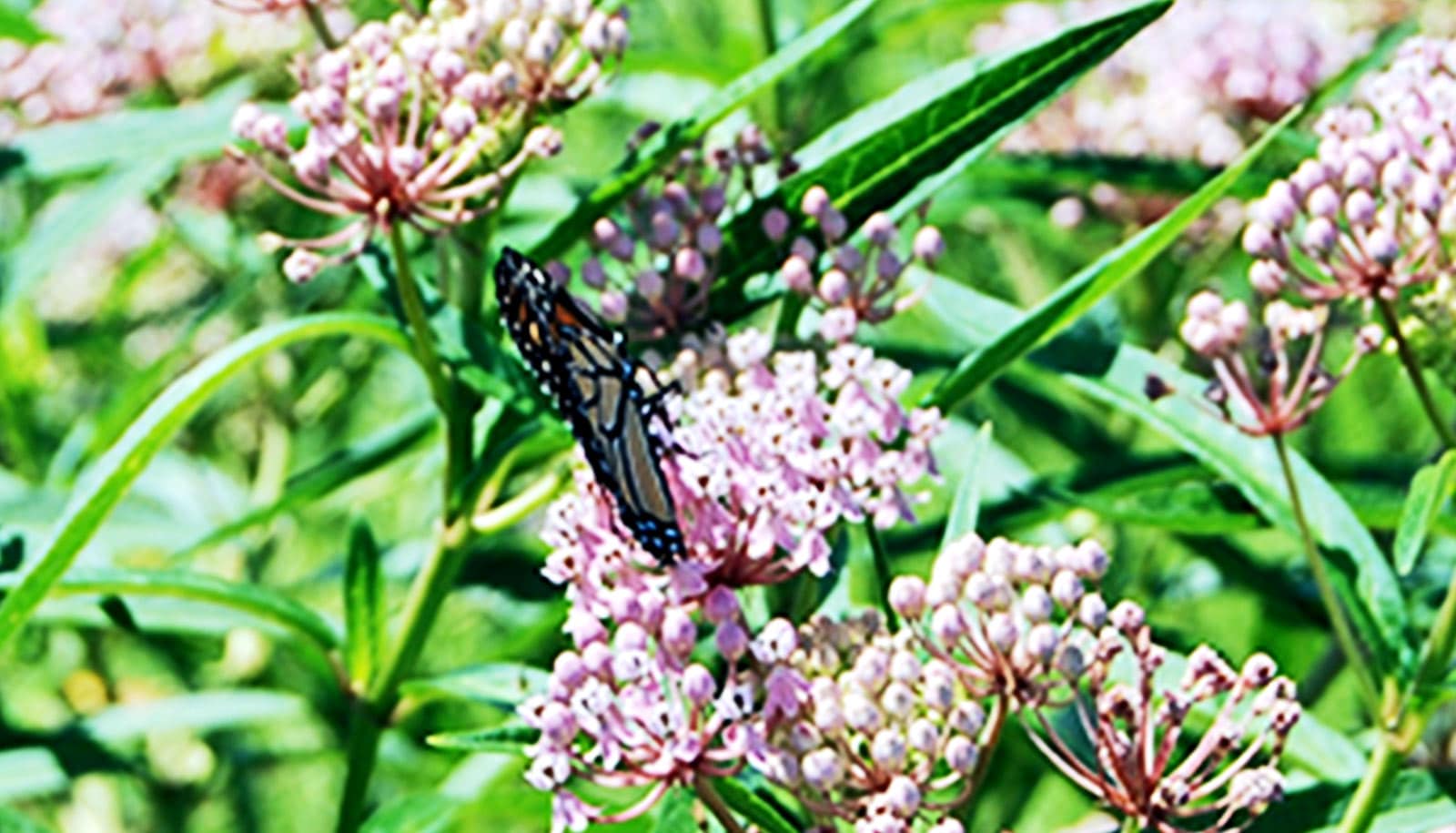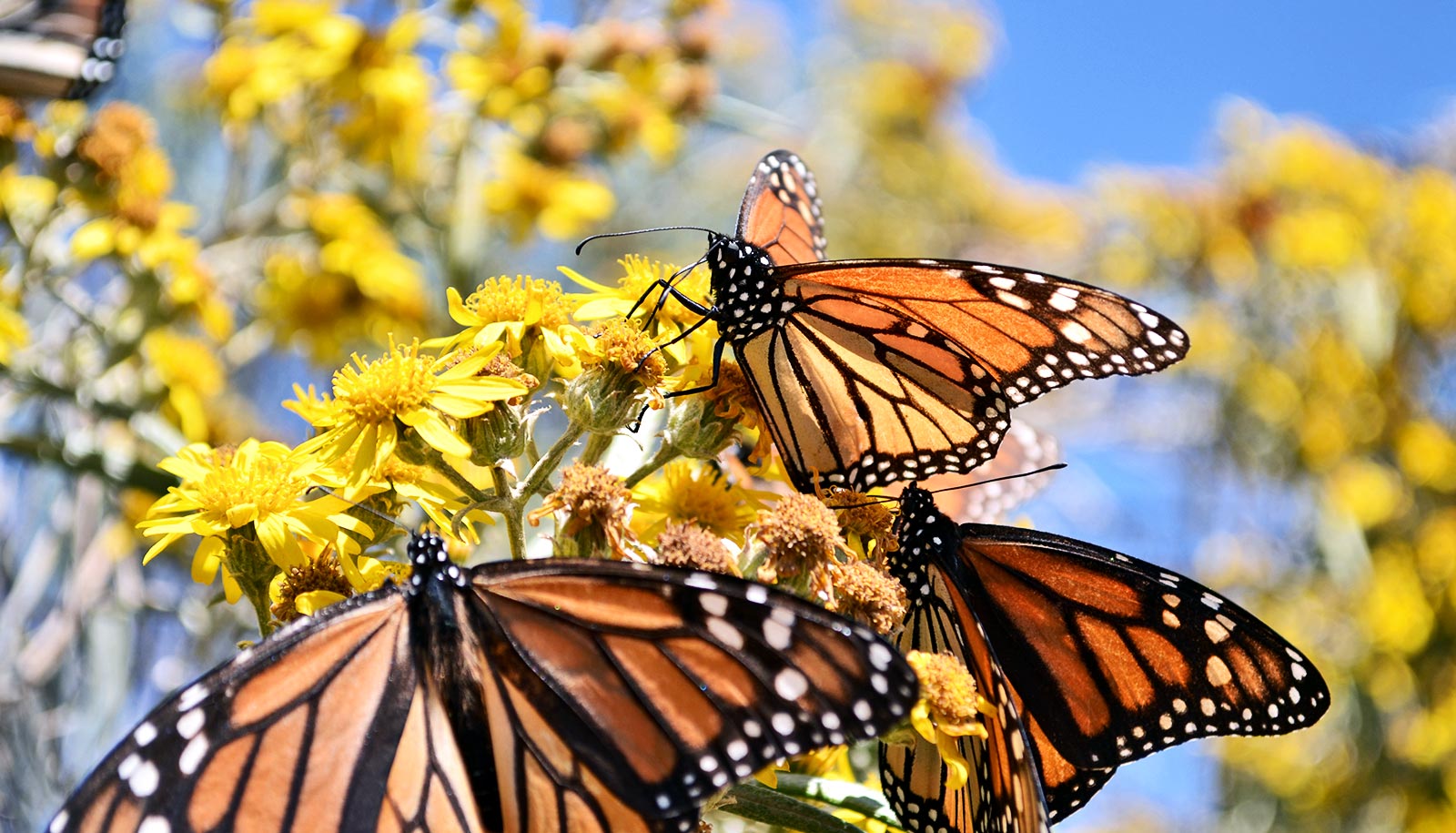Monarch butterflies, one of the most iconic insects of North America, are increasingly plagued by a debilitating parasite, a new analysis shows.
Researchers drew from 50 years of data on the infection rate of wild monarch butterflies by the protozoan Ophryocystis elektrosirrha, or OE. The results show that the OE infection rate increased from less than 1% of the eastern monarch population in 1968 to as much as 10% today.
“We’re seeing a significant change in a wildlife population with a parasitism rate steadily rising from almost non-existent to as high as 1% percent,” says Ania Majewska, a postdoctoral fellow in Emory University’s biology department, and first author of the paper in the Journal of Animal Ecology. “It’s a signal that something is not right in the environment and that we need to pay attention.”
The OE parasite invades the gut of the monarch caterpillars. If the adult butterfly leaves the pupal stage with a severe parasitic infection, it begins oozing fluids from its body and dies. Even if the butterflies survive, as in case of a lighter infection, they do not fly well or live as long as uninfected ones.
The rise in parasitism, the researchers warn, may endanger the mass migration of the monarchs, one of the most spectacular displays in the animal kingdom, involving hundreds of millions of butterflies. Each fall, the western monarch population flies hundreds of miles down the Pacific Coast to spend the winter in California. Meanwhile, on the other side of the Rocky Mountains, eastern monarchs fly from as far north as the US-Canadian border to overwinter in central Mexico, covering as much as 3,000 miles.
“Our findings suggest that tens of millions of eastern monarch butterflies are getting sick and dying each year from these parasites,” says senior author Jaap de Roode, professor of biology. “If the infection rates keep going up, fewer and fewer monarchs will be able to survive to migrate to their overwintering sites.”
Monarch migration and Day of the Dead
One contributor to the rise in the parasitism rate is the increased density of monarchs in places where they lay their eggs, the study finds. The researchers posit that the increased density may be due to many factors, including the loss of wildlife habitat; the widespread planting of exotic, non-native species of milkweed; and by people raising monarchs in large numbers in confined spaces.
Majewska began studying monarchs eight years ago while a graduate student at the University of Georgia. She joined the De Roode lab at Emory in 2019, funded by the NIH program Fellowships in Research and Science Teaching.
“Monarchs are incredible animals,” Majewska says. “Each one is only as heavy as a paperclip but they can fly so far and they are incredibly resilient.”
The Monarch Butterfly Biosphere Reserve in Mexico, where the eastern monarchs overwinter in pine and fir forests, is a World Heritage Site and an important generator of tourism income. “The trees can become so heavy with monarchs that sometimes branches break off and fall,” Majewska says. “When sunlight hits the clusters the monarchs explode like confetti. It’s a magical sight.”
The butterflies arrive in large numbers in Mexico near the Day of the Dead, when families gather around the gravesites of their loved ones. For traditional cultures in the region, monarchs have come to represent the souls of ancestors returning to visit for the celebrations.
In addition to the monarch migration’s natural beauty, economic, and cultural significance, it plays an ecological role, as the butterflies pollinate plants and provide food for wasps, ants, and other invertebrate predators.
Birds, however, tend to avoid the monarchs, as the butterfly’s striking coloration of orange, black, and white is a warning sign that it may be poisonous to them.
When monarchs leave their overwintering sites in the spring, they fly north and lay their eggs. Their caterpillars feed on any of dozens of species of milkweed plants, including some species that contain high levels of cardenolides. These chemicals do not harm the caterpillars, but make them toxic to some predators even after they emerge as adults from their chrysalises.
Monarch butterfly social distancing
In 2010, de Roode discovered that monarchs also use cardenolides as a kind of drug. Experiments in his lab showed that a female infected with the OE parasite prefers to lay her eggs on a toxic species of milkweed, rather than a non-toxic species. Uninfected female monarchs, however, showed no preference. While cardenolides do not cure the caterpillars of parasites, they can lessen the severity of an infection.
For the current paper, the researchers wanted to investigate the OE infection rate in monarch populations over time. They accessed multiple available data sets, which were mostly for the eastern monarchs. The data included samples going back to 1968 collected by the late Lincoln Brower, an entomologist who specialized in monarchs, and by other researchers through the decades.
The results showed the rise in the parasitism rate remained low in the eastern monarch population for several decades before shooting up beginning in the 2000s, then making a slight dip in recent years.
Among the factors that may be contributing to the increased monarch density associated with the rise in parasitism, the researchers note, is the loss of natural habitat and agricultural practices that have reduced the places where milkweed is found. Milkweed used to proliferate amid crops in the Midwest, for instance, but farmers increasingly use genetically engineered herbicide-resistant crops. That allows them to spray their fields to eradicate weeds.
Since milkweed is the sole source of food for monarch caterpillars, and fewer of the plants are available, the female monarchs must cluster more densely to lay their eggs and the butterfly “nurseries” become more crowded with caterpillars.
“One thing that the COVID-19 pandemic taught us is that social distancing can help reduce the spread of an infectious disease,” de Roode says. “The same holds true for monarchs and the OE parasite.”
Good intentions, bad results
Around the year 2000, the researchers note, conservation groups began planting exotic species of milkweed to try to support the monarch population, which has been declining. Ironically, this conservation effort may have fueled more parasitism. “The exotic species of milkweed tend to have more cardenolides than native species,” Majewska explains, “so infected female monarchs may be seeking the exotic species out, adding to the density problem.”
The researchers further hypothesize that people raising monarch caterpillars in large numbers—to support conservation efforts or for commercial purposes—may be keeping them in crowded conditions that foster the spread of the parasite.
“Ultimately, a continuing rise in the monarch’s parasitic infection rate could cause the species to suffer significantly,” Majewska says. “If tens of millions of them are dying annually from parasitic infections, then an extreme weather event during the winter in Mexico might reduce the population to a level that could be dangerous for their genetic diversity.”
“Parasitism is often overlooked in conservation efforts,” de Roode says, “but our findings show how parasites can have a massive impact on wildlife.”
Additional coauthors are from the University of Georgia. The National Institutes of Health and the National Science Foundation supported the work.
Source: Emory University


